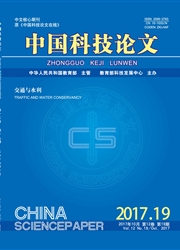

 中文摘要:
中文摘要:
为了提高材料的比表面积,以四氯化钛为钛源,表面活性剂poly(ethylene-glycol)-block-poly(propylene-glycol)-blockpoly(ethylene-glycol)(P123)为模板剂,采用水热法制备了介孔TiO2颗粒。采用BET低温氮气吸附法对介孔TiO2粒子的表面物理性质进行了表征。将介孔TiO2制成光阳极,应用于卟啉-N719共敏化太阳能电池(DSSCs)。结果表明:介孔TiO2颗粒的高比表面积能够大幅提高染料敏化太阳能电池的光电转换效率,以其为光阳极的N719敏化电池的光电转化效率为7.55%,较工业使用TiO2P25为光阳极的电池,光电转化效率提高了21.6%;采用自制的卟啉C4作为敏化染料与N719共敏化,由于增大了染料的吸光范围,电池的光电效率得到了进一步的提高,达到8.38%。
 英文摘要:
英文摘要:
To improve the specific surface area of the material,using titanium tetrachloride as the titanium source,distilled water as the solvent,and P123 as the templates,mesoporous TiO2 particles were synthesized by hydrothermal method.The surface physical properties of the mesoporous TiO2 particleswere characterized by the low temperature nitrogen adsorption method(BET).And then the mesoporous TiO2 was made to be the photoanode and applied in DSSCs to test the photoelectric conversion efficiency.The results indicate that the high specific surface area of the mesoporous TiO2 particlescan significantly improve the photoelectricconversion efficiency of the DSSCs.The photoelectric conversion efficiency of N719 sensitized solar cells when using mesoporous TiO2 particlesas the photoanode is 7.55%,which is 21.6% higher than the cells using TiO2P25 as the photoanode.The porphyrin,prepared by our group,was applied in DSSCs as co-sensitizer to further enhance photoelectric conversion efficiency of cells by 8.38% due to the extension of photo adsorption range of the dye.
 同期刊论文项目
同期刊论文项目
 同项目期刊论文
同项目期刊论文
 期刊信息
期刊信息
